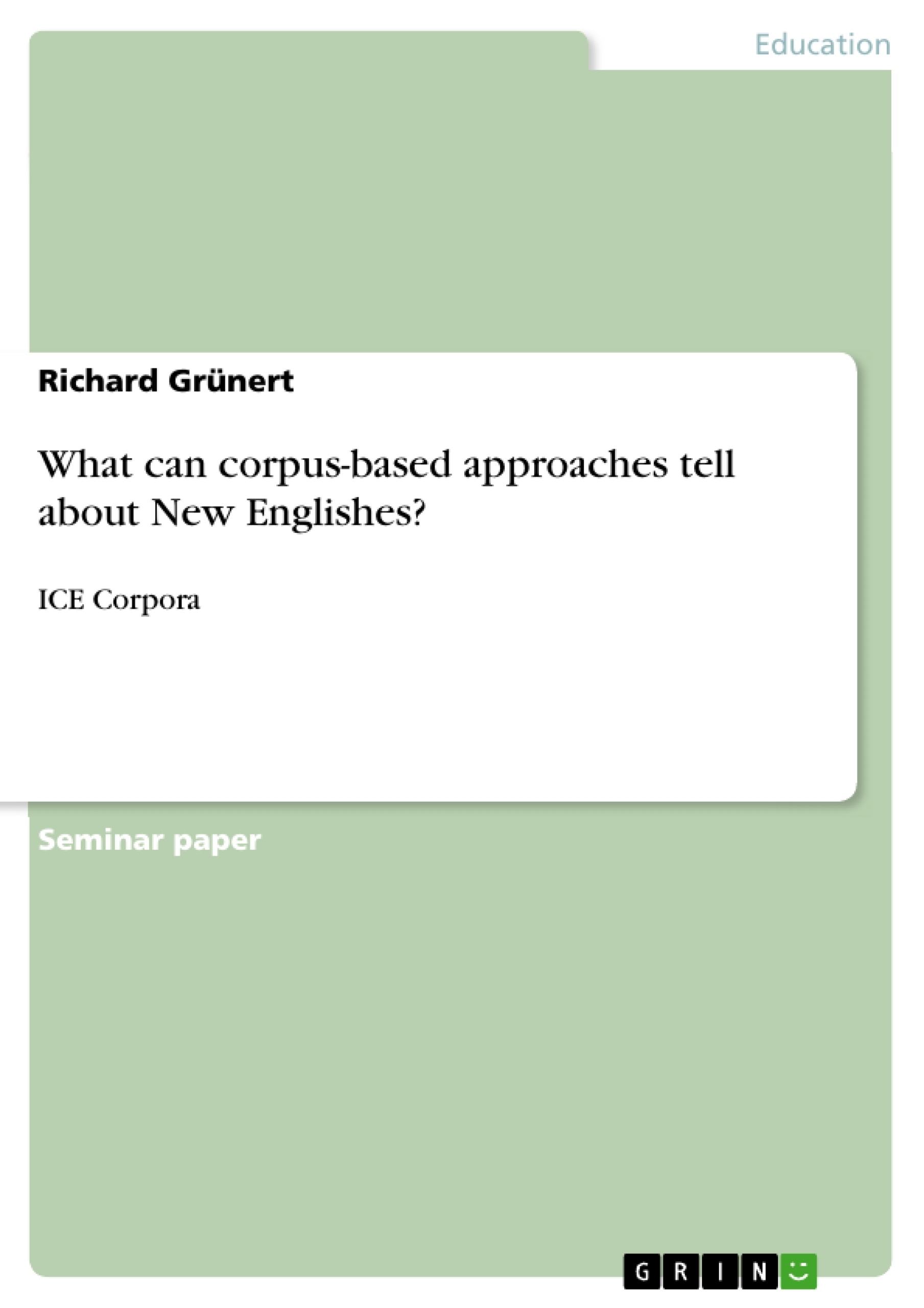In the late 1980s Sidney Greenbaum, a British scholar of the English language and of linguistics, had a vision:
As the parallel corpora become available, new possibilities open up for rigorous comparative and contrastive studies. I envisage the search for typologies of national varieties of English: first-language versus second-language English, British-type versus American-type English, African versus Asian English, East African versus West African English. Researchers might explore what is common to English in all countries where it is used for internal communication, demonstrating how far it is legitimate to speak of a common core for English or of an international written standard.“ (Greenbaum in Sand, 2004: 281).
As a result of that breadth of view and building on his early experimental techniques investigating English grammar and usage, Greenbaum founded the International Corpus of English (ICE). The ICE is a major research project based at the Survey of English Usage to establish identically constructed corpora in different countries of the English-speaking world and provides linguists with a suitable database for their investigations regarding language usage and development, respectively.
This term paper attempts to demonstrate what corpus-based approaches can tell about New Englishes and Asian Varieties, respectively. At first I am going to demonstrate how lexical items (the definite article and the particle verb) are used for synchronic and diachronic analyses. I will then proceed to cultural and sociolinguistic aspects and eventually conclude with some desiderata pushing the subject beyond the boundaries of the prompt.
Inhaltsverzeichnis (Table of Contents)
- Abstract
- Synchronic Analysis
- The Definite Article
- Empiric research on ICE data basis
- Results
- Interpretation of the data
- Diachronic Analysis
- Tracing structural nativization
Zielsetzung und Themenschwerpunkte (Objectives and Key Themes)
This term paper aims to demonstrate the insights that corpus-based approaches can provide regarding New Englishes and Asian varieties of English. The paper examines the use of lexical items (the definite article and particle verbs) for synchronic and diachronic analysis, exploring cultural and sociolinguistic aspects. It concludes by highlighting further research areas beyond the scope of this paper.
- The use of corpus-based approaches to analyze language variation in New Englishes and Asian varieties.
- The role of the definite article in distinguishing grammatical features of Asian Englishes.
- Investigating the diachronic development of particle verbs and their unique characteristics in specific varieties.
- The influence of substrate languages on the grammatical features of New Englishes.
- The relationship between language variation and sociolinguistic factors, including education and social class.
Zusammenfassung der Kapitel (Chapter Summaries)
- Abstract: Introduces the International Corpus of English (ICE) project, a research initiative aimed at establishing comparable corpora of English across various countries. This paper focuses on using corpus-based approaches to analyze New Englishes, particularly Asian varieties.
- Synchronic Analysis: Explores the use of the definite article in different Asian English varieties and compares their patterns of use to Standard English. The paper discusses the variability of the definite article in different text types and analyzes data from the ICE corpora of India, Singapore, Great Britain, and New Zealand. The results show a strong influence of text type on the frequency of definite articles, but also surprising similarities between some varieties.
- Diachronic Analysis: Focuses on the diachronic analysis of particle verbs in various Asian English varieties, including Singapore, the Philippines, India, Kenya, Tanzania, and Great Britain. The paper highlights the importance of particle verbs in understanding structural nativization and how they exhibit variety-specific properties. The analysis considers frequency of use, structural behavior, and productivity range of particle verbs in different varieties.
Schlüsselwörter (Keywords)
This paper focuses on the analysis of New Englishes and Asian varieties of English using corpus-based approaches. Key concepts include synchronic and diachronic analysis, the definite article, particle verbs, structural nativization, substrate languages, and sociolinguistic factors. The study utilizes data from the International Corpus of English (ICE) and investigates the influence of various text types and cultural contexts on language variation.
- Quote paper
- Richard Grünert (Author), 2010, What can corpus-based approaches tell about New Englishes?, Munich, GRIN Verlag, https://www.grin.com/document/155303



